|
|
|
Sort Order |
|
|
|
Items / Page
|
|
|
|
|
|
|
| Srl | Item |
| 1 |
ID:
108952


|
|
|
|
|
| Publication |
2011.
|
| Summary/Abstract |
The Air Force Research Laboratory (AFRL) has been helping students to become more literate in science, technology, engineering, and math (STEM), empowering students to become innovators, inventors, self-reliant, and logical thinkers. As technologically proficient problem-solvers, they will be able to compete as skilled "knowledge workers" in the twenty-first century. The laboratory hopes these efforts will help foster development of a future professional workforce prepared in STEM fields that address sensors, power/propulsion/energy, advanced materials/manufacturing, human performance, and air systems. Achieving and sustaining world-class expertise in these technology areas is vitally important to the AFRL's science and technology mission. Its STEM efforts span the whole of its enterprise. The authors report on progress made through specific AFRL STEM-related initiatives in Ohio, New Mexico, and California.
|
|
|
|
|
|
|
|
|
|
|
|
|
|
|
|
| 2 |
ID:
103327
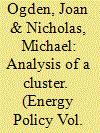

|
|
|
|
|
| Publication |
2011.
|
| Summary/Abstract |
The cost and logistics of building early hydrogen refueling infrastructure are key barriers to the commercialization of fuel cell vehicles. In this paper, we explore a "cluster strategy" for introducing hydrogen vehicles and refueling infrastructure in Southern California over the next decade, to satisfy California's Zero Emission Vehicle regulation. Clustering refers to coordinated introduction of hydrogen vehicles and refueling infrastructure in a few focused geographic areas such as smaller cities (e.g. Santa Monica, Irvine) within a larger region (e.g. Los Angeles Basin). We analyze several transition scenarios for introducing hundreds to tens of thousands of vehicles and 8-42 stations, considering:
|
|
|
|
|
|
|
|
|
|
|
|
|
|
|
|
| 3 |
ID:
171518


|
|
|
|
|
| Summary/Abstract |
California law requires statewide greenhouse gas (GHG) emissions to return to 1990 levels by 2020—a goal achieved in 2016, four years early. We conduct the first independent retrospective analysis of California's greenhouse gas emissions to assess how the state has achieved faster-than-expected emissions reductions. We analyze the extent to which economic activity, climate policies, and market forces drove California's greenhouse gas emissions trends overall and in two key categories: electricity and light-duty vehicles. We also compare historical trends with business-as-usual and policy expectations from the 2008 Climate Change Scoping Plan, California's official strategy for achieving the 2020 emissions limit. Our analysis, based on data through 2017, indicates that reduced economic activity during the 2008–2009 recession and its aftermath has been a major contributor to early achievement of the 2020 emissions limit. Policies and market forces, however, have played a larger role in reducing emissions in recent years—particularly in the electricity sector, which has decarbonized more rapidly than expected. Meanwhile, GHG emissions from light-duty vehicles in recent years were rising, not falling, in contrast to expectations. Our analysis demonstrates how decomposition methods can be used to track climate policy implementation and inform future policy development.
|
|
|
|
|
|
|
|
|
|
|
|
|
|
|
|
| 4 |
ID:
015893
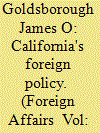

|
|
|
|
|
| Publication |
Spring 1993.
|
| Description |
88-96
|
|
|
|
|
|
|
|
|
|
|
|
|
|
|
|
| 5 |
ID:
127787


|
|
|
|
|
| Publication |
2013.
|
| Summary/Abstract |
To what extent, and under what conditions, does access to arms fuel violent crime? To answer this question, we exploit a unique natural experiment: the 2004 expiration of the U.S. Federal Assault Weapons Ban exerted a spillover on gun supply in Mexican municipios near Texas, Arizona, and New Mexico, but not near California, which retained a pre-existing state-level ban. We find first that Mexican municipios located closer to the non-California border states experienced differential increases in homicides, gun-related homicides, and crime gun seizures after 2004. Second, the magnitude of this effect is contingent on political factors related to Mexico's democratic transition. Killings increased disproportionately in municipios where local elections had become more competitive prior to 2004, with the largest differentials emerging in high narco-trafficking areas. Our findings suggest that competition undermined informal agreements between drug cartels and entrenched local governments, highlighting the role of political conditions in mediating the gun-crime relationship.
|
|
|
|
|
|
|
|
|
|
|
|
|
|
|
|
| 6 |
ID:
142738


|
|
|
|
|
| Summary/Abstract |
Can the people deliberate to set the agenda for direct democracy in large scale states? How might such an institution work? The 2011 California Deliberative Poll piloted a solution to this problem helping to produce proposals that went to the ballot and also to the legislature. The paper reports on how this pilot worked and what it suggests about a possible institution to solve the deliberative agenda setting problem. The legislative proposal passed the legislature but the ballot proposition (Prop 31) failed. However, we show that the proposals actually deliberated on by the people might well have passed if not encumbered by additional elements not deliberated on by the public that drew opposition. The paper ends with an outline of how the process of deliberative agenda setting for the initiative might work, vetting proposals once every two years that could get on the ballot for a greatly reduced cost in signature collections. Adding deliberation to the agenda setting process would allow for a thoughtful and informed public will formation to determine the agenda for direct democracy.
|
|
|
|
|
|
|
|
|
|
|
|
|
|
|
|
| 7 |
ID:
101418
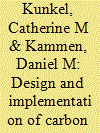

|
|
|
|
|
| Publication |
2011.
|
| Summary/Abstract |
An important concept in discussions of carbon management policies is cap and dividend, where some fraction of the revenues of an auction on emission allowances is returned to citizens on an equal per capita basis. This policy tool has some important features; it emphasizes the fact that the atmosphere is a common property resource, and it is a highly transparent measure that can be effectively used to protect the income of low-income individuals. In this paper we examine this policy in the California context, and focus on the costs and impacts of a cap and dividend scheme when applied to carbon emissions associated with electricity, natural gas and transportation services. We find that cap and dividend can effectively be used to address the economic impacts of carbon management policies, making them progressive for the lowest-income members of society. We find that the majority of households receive positive net benefits from the policy even with the government retaining half of the auction revenue. If auction revenues are instead dedicated only to low-income households, the majority of low-income households can be fully compensated even with the state government retaining upwards of 90% of auction revenues for other purposes.
|
|
|
|
|
|
|
|
|
|
|
|
|
|
|
|
| 8 |
ID:
100848
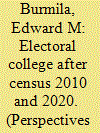

|
|
|
|
|
| Publication |
2009.
|
| Summary/Abstract |
The combined effects of an aging population, domestic migration, and the geographically heterogeneous effects of foreign immigration are producing politically significant changes in the distribution of the American population. Using statistical projections of state populations in the 2010 and 2020 US Censuses combined with statewide estimates of the normal vote based on the last five presidential elections (1992-2008), I show that by 2024 Republican presidential candidates will receive a net benefit of at least eight electoral votes due to the declining population of the Northeast and upper Midwest relative to the rapidly-growing Sun Belt. Democratic presidential candidates will find it increasingly difficult to win elections without having some success in the South and Southwest as Barack Obama did in 2008 but many previous candidates failed to do. While migration will also benefit some solid Democratic states such as California, on balance Republican presidential candidates are poised to benefit from the status of Sun Belt states as magnets for both foreign immigration and domestic migration from a retirement cohort of unprecedented size.
|
|
|
|
|
|
|
|
|
|
|
|
|
|
|
|
| 9 |
ID:
096183
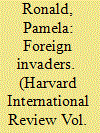

|
|
|
| 10 |
ID:
094260
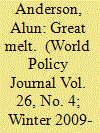

|
|
|
| 11 |
ID:
150438
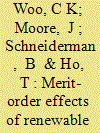

|
|
|
|
|
| Summary/Abstract |
We answer two policy questions: (1) what are the estimated merit-order effects of renewable energy in the California Independent System Operator’s (CAISO’s) day-ahead market (DAM) and real-time market (RTM)? and (2) what causes the hourly DAM and RTM prices to systematically diverge? The first question is timely and relevant because if the merit-order effect estimates are small, California’s renewable energy development is of limited help in cutting electricity consumers’ bills but also has a lesser adverse impact on the state’s investment incentive for natural-gas-fired generation. The second question is related to the efficient market hypothesis under which the hourly RTM and DAM prices tend to converge. Using a sample of about 21,000 hourly observations of CAISO market prices and their fundamental drivers during 12/12/2012–04/30/2015, we document statistically significant estimates (p-value≤0.01) for the DAM and RTM merit-order effects. This finding lends support to California’s adopted procurement process to provide sufficient investment incentives for natural-gas-fired generation. We document that the RTM-DAM price divergence partly depends on the CASIO’s day-ahead forecast errors for system loads and renewable energy. This finding suggests that improving the performance of the CAISO’s day-ahead forecasts can enhance trading efficiency in California’s DAM and RTM electricity markets.
|
|
|
|
|
|
|
|
|
|
|
|
|
|
|
|
| 12 |
ID:
126422
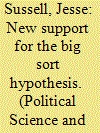

|
|
|
|
|
| Publication |
2013.
|
| Summary/Abstract |
This article empirically examines the "Big Sort hypothesis"-the notion that, in recent years, liberal and conservative Americans have become increasingly spatially isolated from one another. Using block group-, tract-, and county-level party registration data and presidential election returns, I construct two formal indices of segregation for 1992-2010 in California and evaluate those indices for evidence of growth in the segregation of Californians along ideological lines. Evidence of rising geographic segregation between Democrats and Republicans for measures generated from both party registration and presidential vote data is found. This growth is statistically significant for 10 of the 12 segregation measures analyzed. In addition, many of the increases are practically significant, with estimates of growth in segregation during the observation period ranging from 2% to 23%.
|
|
|
|
|
|
|
|
|
|
|
|
|
|
|
|
| 13 |
ID:
092741
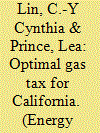

|
|
|
|
|
| Publication |
2009.
|
| Summary/Abstract |
This paper calculates the optimal gasoline tax for the state of California. According to our analysis, the optimal gasoline tax in California is $1.37/gal, which is over three times the current California tax when excluding sales taxes. The Pigovian tax is the largest part of this tax, comprising $0.85/gal. Of this, the congestion externality is taxed the most heavily, at $0.27, followed by oil security, accident externalities, local air pollution, and finally global climate change. The other major component, a Ramsey tax, comprises a full $0.52 of this tax, reflecting the efficiency in raising revenues from a tax on gasoline consumption due to the inelastic demand of this consumption good.
|
|
|
|
|
|
|
|
|
|
|
|
|
|
|
|
| 14 |
ID:
121725
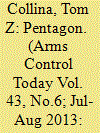

|
|
|
|
|
| Publication |
2013.
|
| Summary/Abstract |
In a setback to congressional proponents of a new missile interceptor site on the U.S. East Coast, senior military officials wrote in June that there is no military requirement for such a site and that the funds would be better spent on improving sensor capabilities for the existing system of interceptor sites in Alaska and California.
|
|
|
|
|
|
|
|
|
|
|
|
|
|
|
|
| 15 |
ID:
126850
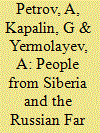

|
|
|
|
|
| Publication |
2013.
|
| Summary/Abstract |
The article describes the contribution of people from Siberia and the Russian Far East to the colonization of California, and the foundation and development of Fort Ross. It also shows the significance of the Russian Orthodox Church's activity in this area.
|
|
|
|
|
|
|
|
|
|
|
|
|
|
|
|
| 16 |
ID:
126244


|
|
|
|
|
| Publication |
2012.
|
| Summary/Abstract |
Recent national plans for recovery from bioterrorism acts perpetrated in densely populated urban areas acknowledge the formidable technical and social challenges of consequence management. Effective risk and crisis communication is one priority to strengthen the U.S.'s response and resilience. However, several notable risk events since September 11, 2001, have revealed vulnerabilities in risk/crisis communication strategies and infrastructure of agencies responsible for protecting civilian populations. During recovery from a significant biocontamination event, 2 goals are essential: (1) effective communication of changing risk circumstances and uncertainties related to cleanup, restoration, and reoccupancy; and (2) adequate responsiveness to emerging information needs and priorities of diverse populations in high-threat, vulnerable locations. This telephone survey study explored predictors of public reactions to uncertainty communications and reassurances from leaders related to the remediation stage of an urban-based bioterrorism incident. African American and Hispanic adults (N=320) were randomly sampled from 2 ethnically and socioeconomically diverse geographic areas in New York and California assessed as high threat, high vulnerability for terrorism and other public health emergencies. Results suggest that considerable heterogeneity exists in risk perspectives and information needs within certain sociodemographic groups; that success of risk/crisis communication during recovery is likely to be uneven; that common assumptions about public responsiveness to particular risk communications need further consideration; and that communication effectiveness depends partly on preexisting values and risk perceptions and prior trust in leaders. Needed improvements in communication strategies are possible with recognition of where individuals start as a reference point for reasoning about risk information, and comprehension of how this influences subsequent interpretation of agencies' actions and communications.
|
|
|
|
|
|
|
|
|
|
|
|
|
|
|
|
| 17 |
ID:
186915
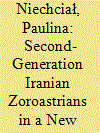

|
|
|
|
|
| Summary/Abstract |
The article contributes to filling the research gap concerning Iranian Zoroastrians in diaspora. Using a narrative approach, it explores how second-generation Zoroastrians raised in the United States learn and practice religion while facing the challenges of a pluralistic American society. The article includes a case study of two young Zoroastrian women interviewed in 2019, members of the Californian community. The contrastive cases shed light on the internal heterogeneity of Zoroastrianism, different ways the religion is perceived and experienced, and different ideas about future preservation of the ethno-religious heritage. The study contributes to an understanding of how Zoroastrianism evolves on a new continent and how it differs from what Zoroastrian immigrants brought from Iran.
|
|
|
|
|
|
|
|
|
|
|
|
|
|
|
|
| 18 |
ID:
105173
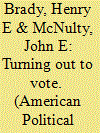

|
|
|
|
|
| Publication |
2011.
|
| Summary/Abstract |
Could changing the locations of polling places affect the outcome of an election by increasing the costs of voting for some and decreasing them for others? The consolidation of voting precincts in Los Angeles County during California's 2003 gubernatorial recall election provides a natural experiment for studying how changing polling places influences voter turnout. Overall turnout decreased by a substantial 1.85 percentage points: A drop in polling place turnout of 3.03 percentage points was partially offset by an increase in absentee voting of 1.18 percentage points. Both transportation and search costs caused these changes. Although there is no evidence that the Los Angeles Registrar of Voters changed more polling locations for those registered with one party than for those registered with another, the changing of polling places still had a small partisan effect because those registered as Democrats were more sensitive to changes in costs than those registered as Republicans. The effects were small enough to allay worries about significant electoral consequences in this instance (e.g., the partisan effect might be decisive in only about one in two hundred contested House elections), but large enough to make it possible for someone to affect outcomes by more extensive manipulation of polling place locations.
|
|
|
|
|
|
|
|
|
|
|
|
|
|
|
|
| 19 |
ID:
112289


|
|
|
|
|
| Publication |
2012.
|
| Summary/Abstract |
The economic modeling that policymakers typically rely on-and all the economic modeling of AB 32 (California's Global Warming Solutions Act)-assumes smooth future price paths, ignoring the reality of significant price volatility of fuels derived from crude oil. To add some insight into the value of reduced exposure to gasoline and diesel price spikes as a result of climate policies like AB 32, we define the benefit of upside hedge value: the extra avoided expenditures on gasoline and diesel fuel that accrue when their prices spike. We develop two historically-grounded price spike scenarios: a moderate spike of 25% and a large spike of 50%. After accounting for short-term price elasticity of demand effects, we estimate the upside hedge value to be between $2.4 billion and $5.2 billion (all 2007 dollars) for the moderate and large hypothetical shock scenarios, respectively.
|
|
|
|
|
|
|
|
|
|
|
|
|
|
|
|
| 20 |
ID:
123846
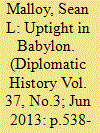

|
|
|
|
|
| Publication |
2013.
|
| Summary/Abstract |
Eldridge Cleaver (1935-1998) was a key figure in the U.S. black power movement in the late sixties and early seventies whose globe-trotting freelance diplomacy on behalf of the Black Panther Party (BPP) led him from Soledad prison to the streets of Oakland, California and from there to Havana, Algiers, Pyongyang, Beijing, Hanoi, Brazzaville, and Paris. Cleaver's party-building efforts with the BPP illustrated the powerful appeal of an anticolonial analysis that looked beyond the East-West dynamics of the Cold War to position people of color as part of a global North-South struggle over decolonization. Cleaver's journey also illustrated the continuing and ultimately tragic relevance of the Cold War to the evolution of the African American freedom struggle. In establishing the International Section of the BPP, Cleaver found himself dependent on the whims of his new allies and highly sensitive to changes in the Cold War environment.
|
|
|
|
|
|
|
|
|
|
|
|
|
|
|
|
|
|
|
|
|